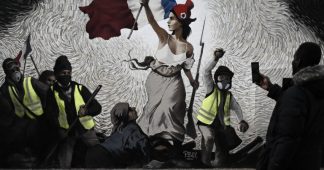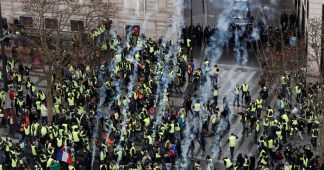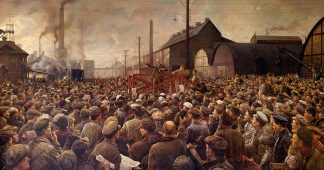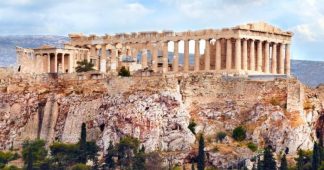In the Footsteps of Greece: Eugene Delacroix’s Exhibit at the Metropolitan Museum of Art
By Catherine Tsounis
January 12th, 2019
“A confluence of transformative historical events set the stage for Delacroix’s brilliant artistic achievements. A tumultuous age of revolution and counterrevolution had raised the political stakes. The birth of the modern newspaper industry began the mass production of information. The consolidation of artistic authority in the French capital created a powerful cultural pedestal. Painting, in short, was at a critical crossroads. It could catapult the propaganda.” 1 Christopher Knight, Los Angeles Times Art Critic.
Art reflects the history of the times. Our Art reflects our 2019 civilization. Eugene Delacroix was above all a Phil-Hellene influenced by Lord Gordon Byron’s works, who died in Missolonghi. His love of Ancient and Modern Greece is seen in the 2018-19 Museum of Metropolitan Art’sexhibition. I recently went to the Metropolitan Museum of Art to see his art work. The descriptions did not highlight his preoccupation with Ancient Greece, Byzantine Empire, 1821 Revolution or the Arab civilization that preserved the Byzantine learning. The art work itself highlighted Delacroix’s love for Western civilization’s contribution by the Greek world.
Read more at http://www.greeknewsonline.com/in-the-footsteps-of-greece-eugene-delacroixs-exhibit-at-the-metropolitan-museum-of-art
Cry freedom
It is the definitive image of the French Revolution – and yet Eugène Delacroix’s Liberty Leading the People does not portray the French Revolution at all. The subtitle of the nearly 11ft-wide canvas that hangs in the gallery of the Louvre reserved for the greatest French history paintings – those large and weighty accounts of public events, among which this is a rather small and modest image – is very specific. This scene, it tells us, took place on July 28 1830.
On that day, the people changed history in Paris. Students rang the great bell of Notre Dame, work stopped altogether and people fired at soldiers from windows high over narrow streets. Crowds built up, shouting: “Down with the king!” By late afternoon, royal troops were making a last stand in the Tuileries while Charles X dined outside the city. The Bourbon king had alienated natural supporters as well as radicals with ultra-conservative policies, and the outcome of the July revolution was cautious reform; the liberal Duc d’Orléans was persuaded to take the crown, hailed by the statesman Lafayette as in himself “the best of republics”.
Read more at https://www.theguardian.com/artanddesign/2005/apr/02/art1
New mural in Paris celebrates ‘yellow vest’ revolt
9 January 2019
A huge mural celebrating the “yellow vests” revolt has appeared in one of the most traditionally working class districts of the French capital.
Street artist Pascal Boyart created the work, based on Eugene Delacroix’s monumental canvass “Liberty Leading the People”, which glorified the revolution of July 1830 in which the people of Paris drove King Charles X from power.
The mural can be found on a wall opposite the Cent Quatre, a public cultural centre in Paris, on rue d’Aubervilliers
Boyart told AFP that the mural in the working-class 19th arrondissement of northern Paris was to show his support for the anti-government protests which have shaken France since November.
Read more at http://www.defenddemocracy.press/new-mural-in-paris-celebrates-yellow-vest-revolt/











